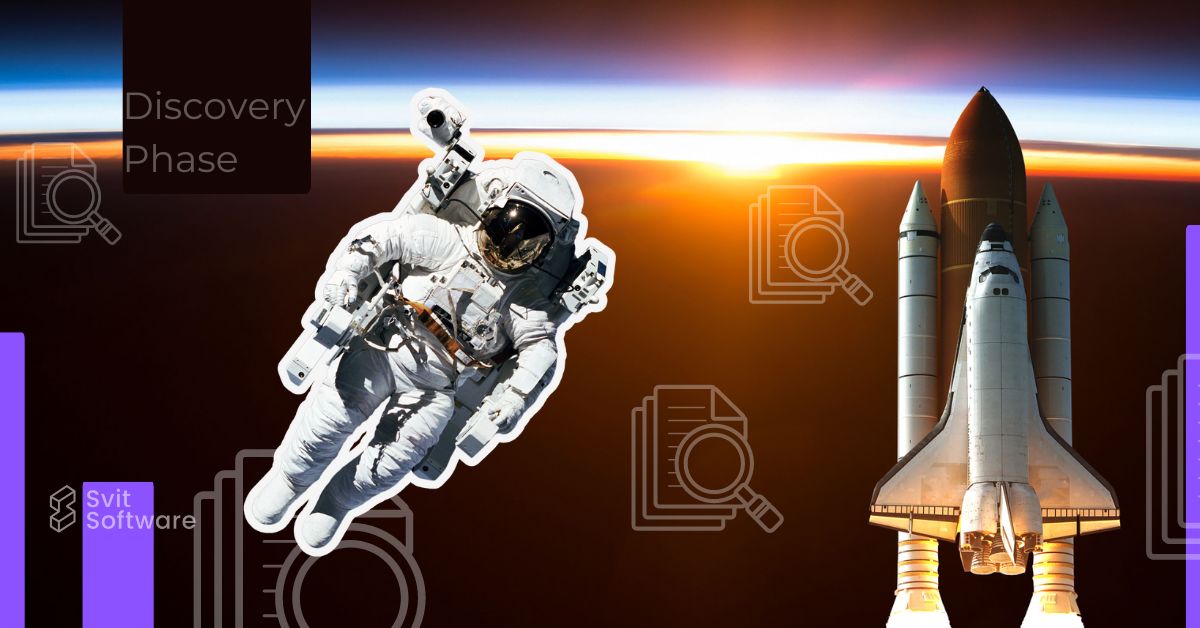6 Essential Technical Documents of the Discovery Phase




During the Discovery Phase, we embark on an exhilarating and dynamic journey to lay the groundwork for a successful project. It’s about gathering crucial information and crafting a well-defined roadmap for its development. Essentially, this roadmap comprises a set of documents that will serve as guiding lights for the project team throughout its execution.
The primary aim of the discovery phase is to delineate the project’s objectives, timelines, budget, and requirements while also seeking to minimize development costs. This involves conducting market research, analyzing competitors, and assessing potential risks, costs, and benefits—all essential components of this stage. However, our focus here is on identifying the specific TECHNICAL documents that need to be generated during the discovery phase to facilitate seamless project implementation.

A crucial aspect of developing any software product is establishing its Project Vision. This involves crafting a clear and motivating description of the desired outcome expected upon the project’s completion. The Vision outlines the primary goals and directions of the project, including its mission, values, and guiding strategic principles. It also details the target audience, their needs, and the types of system users with corresponding access privileges. Additionally, the Vision formalizes a concise list of features for the future product and articulates key expectations regarding its implementation timeline.
The document reflects the shared understanding of the project by the development team and stakeholders. A well-defined project vision fosters team unity, streamlines prioritization efforts, and ensures the successful execution of the project.
Decomposition is the process of breaking down complex tasks or projects into smaller ones, making them easier to create and manage. This approach aids in understanding the project’s structure, identifying its key elements, and establishing a logical sequence of actions to achieve the goals.
Technical Specification is a detailed document that outlines the technical requirements and parameters of a software product or system. It defines architectural solutions, technological standards, data formats, interfaces, and other technical aspects essential for the product’s development and implementation. This document is crucial for ensuring the quality and compliance of the developed product with user requirements and expectations.
The Team Composition Plan is a strategic document that outlines the makeup of the project team and the allocation of roles and responsibilities among its members. It considers the diverse skills, experiences, and expertise required for successful project delivery and ensures the optimal utilization of team resources. Key roles such as project managers, developers, testers, analysts, etc., are defined, along with mechanisms for communication and collaboration among team members.
With the Team Composition Plan, you’ll have clarity on the specialists needed at each stage of development. Utilizing the Staff Augmentation service allows you to bring in specialists precisely when required, without the overhead of maintaining them on staff permanently.
Creation of Preliminary Design is an important phase in the development of a software product, preceding the detailed design phase. During this stage, the team focuses on crafting a broad conceptual representation of the product, delineating its core functionalities and architecture. Consequently, the team can create a prototype or conceptual model to assess the feasibility of the idea and address primary technical and design concerns. This method offers a cost-effective and swift means to initially test your concepts and implement rapid adjustments.
At SvitSoftware, we offer various pre-design options, including:
This not only allows for early feedback from end-users but also facilitates presenting the product to potential investors and stakeholders.
This strategic document outlines the sequence and delivery schedule of project stages or components. The Delivery Plan includes specific completion dates and deadlines for each phase of the project, along with defining key milestones and intermediate results necessary throughout the process.
When crafting a Delivery Plan, it’s essential to consider resources, budget, and other constraints to ensure timely delivery. Anticipating potential risks and devising strategies to manage them is also crucial for successful product delivery. The outcome of creating a Delivery Plan is a clear roadmap that aids in coordinating actions and ensuring the project’s timely and effective implementation.
MVP Delivery Plan
SvitSoftware offers the development of a product delivery plan for an MVP (“minimum viable product”). Implementing an MVP requires minimal resources and funds and allows you to gauge the market demand for your future product. The MVP delivery plan serves as an ideal solution for startups. Learn more about MVP here.
The process of determining the expected costs, labor efforts, and resources necessary for the successful completion of a project is known as Project Estimation. This document encompasses an estimation of time, financial resources, human resources, and other material costs required during project implementation. A critical aspect of the assessment process involves identifying potential risks and uncertainties that could impact project execution and devising strategies to manage them.
A thorough project assessment ensures the realism and reliability of plans, delineates the necessary resources and deadlines for tasks, and facilitates cost control and resource allocation throughout project implementation. It enables the creation of a transparent and effective action plan that facilitates successful execution within established constraints and requirements.
The Discovery Phase is a pivotal stage in the development of any software product. It offers insights into the project’s purpose and specifics, allowing for the determination of necessary steps for successful implementation. Key technical documents to be created during this phase include the
These documents foster a clear understanding of project objectives, optimize resource allocation, and facilitate effective project management. Ultimately, through thorough analysis and planning during the discovery phase, the team can ensure successful project implementation with minimal risks and costs.

Learn how our experts can accelerate your business growth with DevOps as a Service offering